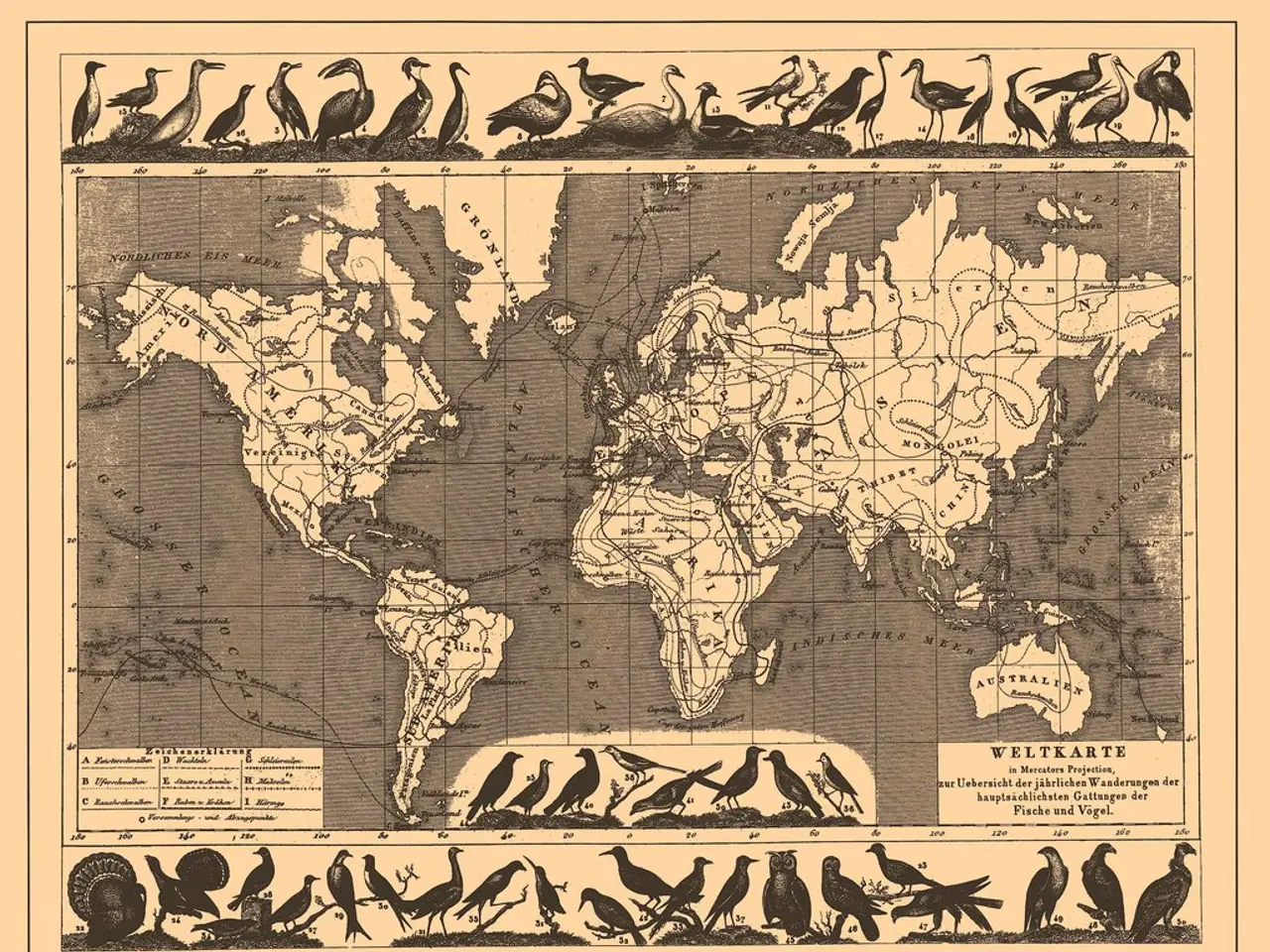"Imminent Alteration of the World Map due to Disinformation Efforts"
In a bid to influence how Africa is perceived in global knowledge systems, Fara Ndiaye of Speak Up Africa and Moky Makura, CEO of Africa No Filter, have launched a campaign to correct the long-standing distortion in world maps.
The distortion in question is the Mercator projection, a map projection developed by Gerhard Mercator in 1569, which has been the standard for centuries. The Mercator projection distorts the size of continents, making Europe and North America appear larger and Africa smaller. This inaccurate representation has been a source of controversy, with Makura describing it as "the world's longest disinformation and misinformation campaign."
The Equal Earth map projection offers a fairer and more accurate representation of global geography. Developed in 2018 by Bojan Šavrič, Bernhard Jenny, and Tom Patterson, this pseudo-cylindrical projection preserves relative area similarly to the Gall-Peters projection, providing a visually pleasing alternative.
The "Correct the Map" campaign, initiated by Africa No Filter and Speak Up Africa, calls on international organisations such as the UN, World Bank, and BBC to switch to the Equal Earth map projection. The African Union has also joined the movement, declaring 2025 as the "Year of Justice for Africans and People of African Descent through Reparations."
This initiative aims to address historical injustices such as the transatlantic slave trade, colonialism, apartheid, and genocide. Africa, the second-largest continent with over 1.5 billion inhabitants, is poised to reclaim its rightful place in the world.
While some may argue that a map is just a map, the misrepresentation of Africa's size and importance has far-reaching consequences. It influences perceptions, decision-making, and policy-making, perpetuating a cycle of inequality and disempowerment. By correcting this distortion, we take a significant step towards a more equitable world.
Another example of a world map that distorts reality is one that marks countries by their perceived danger. This not only reinforces harmful stereotypes but also overlooks the complexity and diversity of each nation. The Equal Earth map projection, on the other hand, presents a more balanced and accurate view, reflecting the true size and importance of Africa and the world.
As we move forward, it is crucial to challenge and correct these historical biases. By advocating for the use of the Equal Earth map projection, we can contribute to a more equitable and informed global community. After all, as Ndiaye emphasises, "the way we represent Africa in global knowledge systems matters."








